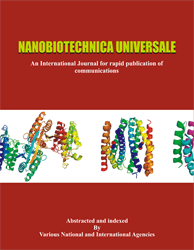Screening of Bacterial Isolates for the Decolourization of Reactive Azo Dyes
K. Gayathri1 , Hasanain A. J. Gharban2 , P. Saranraj* 1 , L. Yuvalakshmi1 and L. Charlie Jelura1
1PG and Research Department of Microbiology, Sacred Heart College -Autonomous, Tirupattur - 635601 2Department of Internal and Preventive Veterinary Medicine, College of Veterinary Medicine, University of Wasit, Wasit, Iraq. Corresponding Author: microsaranraj@gmail.com
ABSTRACT
The release of textile dye effluents into water bodies poses significant environmental concerns due to their toxicity and resistance to degradation. This study investigates the bioremediation potential of bacterial isolates for the decolourization of reactive azo dyes from textile effluent. The dye-contaminated wastewater was collected from a dyeing unit in Tirupur, Tamil Nadu, India, and bacterial strains were isolated and identified using morphological and biochemical characterization. The identified bacterial species included Pseudomonas fluorescens, Bacillus subtilis, Azospirillum brasilense, Rhizobium japonicum, and Azotobacter chroococcum. The bacterial isolates were screened for dye decolourization efficiency using a plate assay. The bacterial consortium demonstrated enhanced decolourization efficiency compared to individual isolates, suggesting synergistic interactions. The findings indicate that bacterial isolates, particularly Pseudomonas fluorescens, offer an effective, eco-friendly, and cost-efficient alternative for textile wastewater treatment. Compared to conventional chemical treatments, microbial bioremediation presents a sustainable approach to reducing environmental pollution caused by textile dye effluents. Further research on optimizing bacterial consortia and process parameters can enhance the scalability and efficiency of biological dye degradation.
